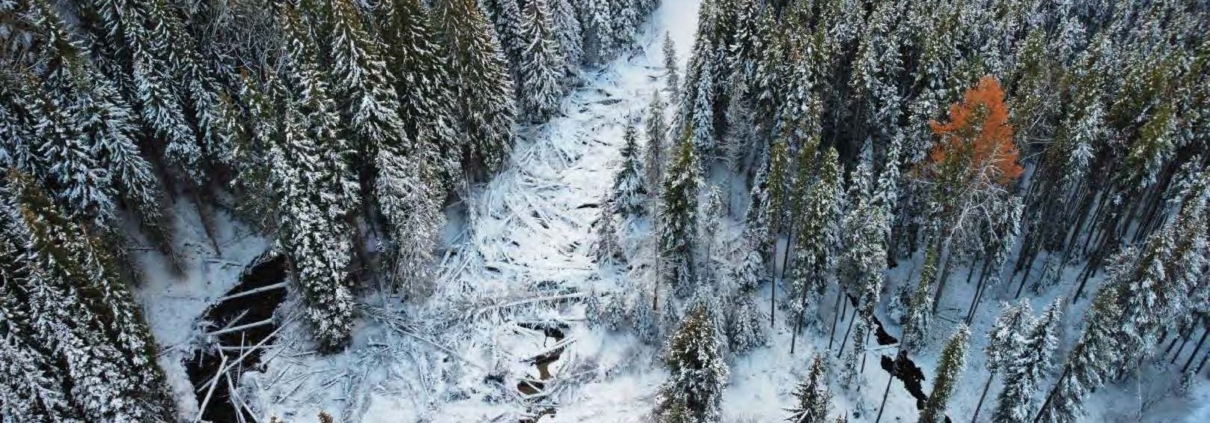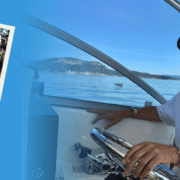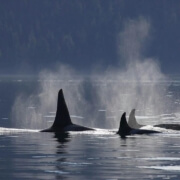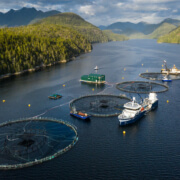Thousands of salmon make it upstream just before winter
Dec. 07, 2022
Log-jam removal from key Nicola River habitat allows 2,000 salmon to reach spawning grounds.
One-year after the 2021 floods left Pacific salmon stranded in fields and vital habitat in immediate need of repair, coho salmon have some good news as a significant barrier to their spawning habitat has been addressed.
A flight in November 2022 above the Coldwater River in the Nicola Valley of the B.C. Interior captured footage of an unusual and distressing sight. Coho salmon were seen holding below the log jam and trying to get past, but unable to access their spawning habitat.
However, this Coldwater coho population received some good news just in time for spawning.
In the late fall during the first snowfall, a dedicated team came together and helped the fish gain access to their spawning grounds.
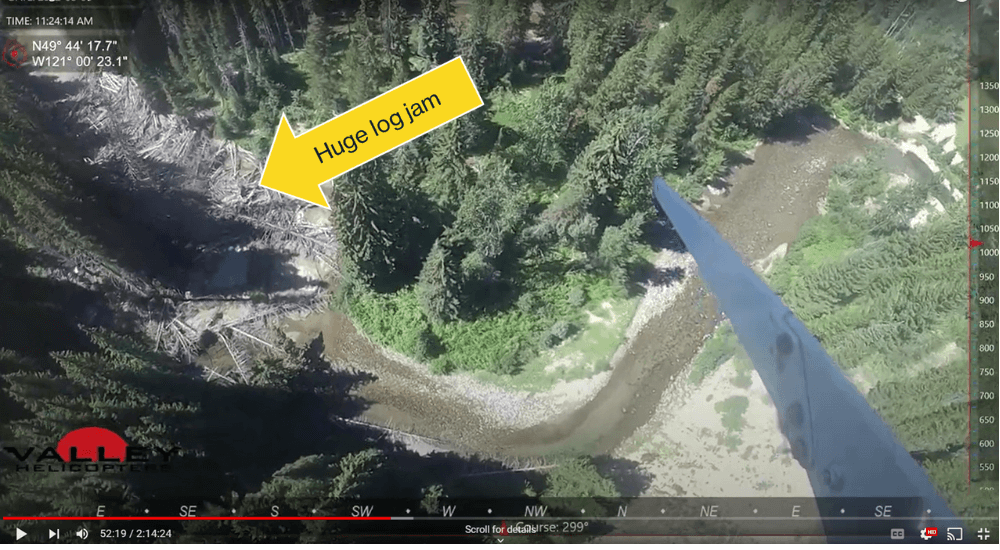
Before: November 2022 aerial view of Coldwater-Nicola River log jam blocking salmon from accessing more than 10 kilometres of spawning habitat.
“When you see fish holding like that, butting their heads up against a blockage, some of them resorting to spawning in sub-par substrate you just want to help get them to a better place on the river where their offspring stand a better chance to survive and thrive,” says Lynda Ritchie, a restoration biologist with Fisheries and Oceans Canada (DFO).
The destination is especially important for this Coldwater coho population that has shown good signs of recovery in recent years; supporting their spawning is imperative for continued recovery.
Thanks to a coordinated effort by the Nicola Fisheries Emergency Working Group team comprising the Scw’exmx Tribal Council, DFO, BC Ministries, Pacific Salmon Foundation, Kerr Wood Leidal, Rock Solid Industries, and Triton Environmental, the team aligned promptly to help the Coldwater coho, which were being preyed upon by predators while holding below the log jam.
The team constructed a bypass channel to see if it could provide urgent support. The next day, coho were seen swimming past the log-jam site, successfully accessing more than 10 kilometres of important habitat.
“It was such a feeling of relief to see the numbers of coho that were able to make it up steam and begin to spawn. Six kilometers of stream above the jam was filled with redds just days after we built the channel,” says Ritchie. “Everyone came together, made the work happen, and the fish got to where they needed to go.”
PSF funded the site assessment and provided approximately $50,000 thanks to the Pacific Salmon Endowment Fund and generous donors.
“Moving forward with partnership structures has been very constructive for how we respond to flooding,” says Ritchie. “For example, PSF’s role in supporting action plan delivery for this and other urgent works has been incredibly helpful throughout the salmon flood recovery process.”
Fisheries Technologist Jessica Urquhart with the Scw’exmx Tribal Council concurs. “PSF’s involvement has been helpful in seeing this project, supported by Chief Spahan of the Coldwater Band, move forward,” says Urquhart.
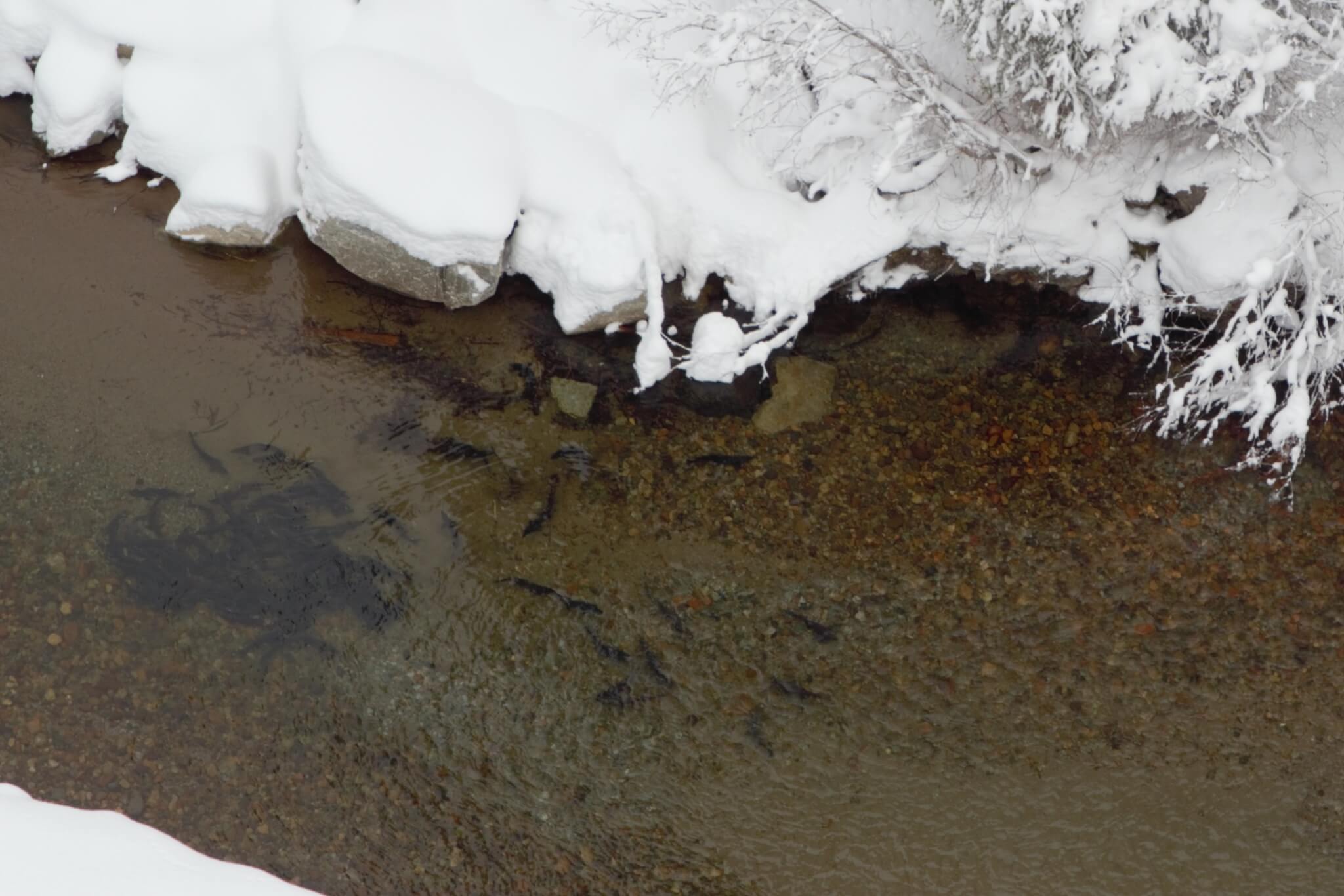
Coho salmon observed upstream of the log jam after it was removed.
Aftermath of the 2021 floods
The Coldwater River bypass channel was one of many projects completed with more assessments and projects still underway.
Many post-flood projects have been completed, and assessments are underway for others that may begin soon. Immediately after the floods, PSF promptly aligned partners and funded $300,000 in urgent salmon recovery efforts. As the emergency subsided, PSF assisted to convene leaders and experts from First Nations, government, NGOs, and volunteers, and continued to fund game-changing recovery efforts in high priority salmon-producing areas.
Due to climate change, events like the 2021 floods and the 2022 drought will occur more frequently and continue to threaten endangered salmon populations.
“These time-sensitive projects related to floods can act as a catalyst for improved planning, preparation, and to advance integrated management and nature-based solutions that will ultimately be more compatible with salmon sustainability,” says Jason Hwang, VP Salmon at PSF.
“We need to stop treating events like these as a surprise. Instead, we need to start changing our behaviours and take measures to reduce impacts from our development activities and invest in measures that will make our watersheds more resilient and help salmon adapt to climate change.”

